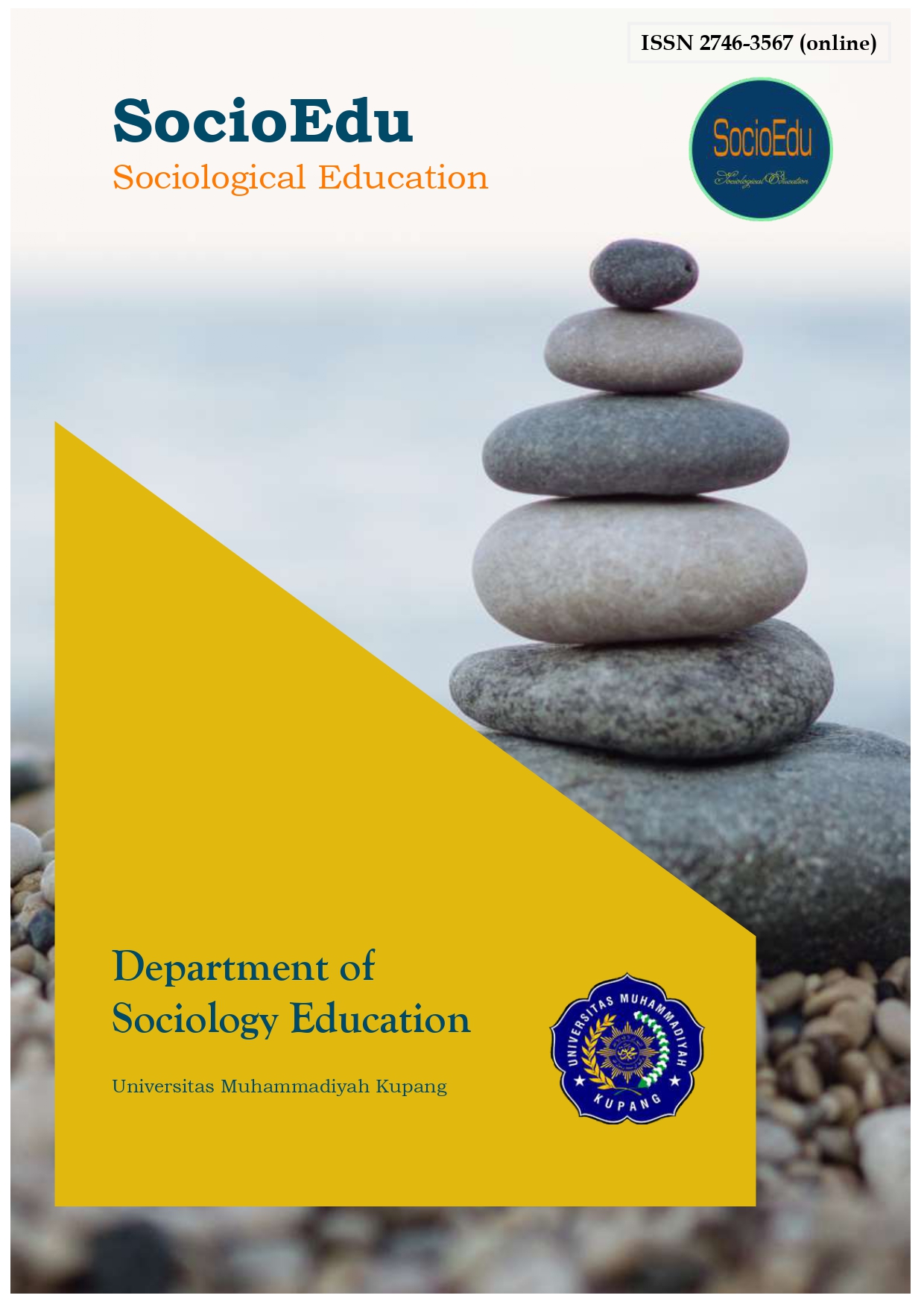Main Article Content
Abstract
This research investigates how EFL (English as a Foreign Language) teachers perceive the integration of Artificial Intelligence (AI) tools in schools located in sub-urban areas. With the fast-paced development of AI in education, both benefits and drawbacks have emerged, particularly in the field of English language instruction. Adopting a qualitative case study design, this study involved seven EFL teachers from vocational and senior high schools in Samarinda, East Kalimantan. Data were gathered through semi-structured interviews and analyzed using thematic analysis. The results reveal that while most teachers see AI as a helpful aid for creating teaching materials and streamlining administrative tasks, they also believe it cannot replace the essential human element in education. Concerns were raised about students becoming overly dependent on AI, the ethical implications of its use, and the importance of tailoring AI-generated content to suit students' learning needs. Additionally, participants highlighted the need for ongoing professional developmentespecially for older or more experienced teachers to ensure AI is applied effectively and ethically in the classroom. This study offers insights into AI usage in less commonly studied educational settings and emphasizes the importance of implementing AI in a way that blends technological tools with sound pedagogical practices. It also recommends regular teacher training and the establishment of ethical frameworks to ensure AI supports rather than undermines English language education.
Keywords
Article Details

This work is licensed under a Creative Commons Attribution 4.0 International License.
References
- Abbass, H. A. (2019). Social Integration of Artificial Intelligence: Functions, Automa-tion Allocation Logic, and Human-Autonomy Trust. In Cognitive Computation (Vol. 11, Issue 2, pp. 159171). Springer New York LLC. https://doi.org/10.1007/s12559-018-9619-0
- Chen, L., Chen, P., & Lin, Z. (2020). Artificial Intelligence in Education: A Review. IEEE Access, 8, 7526475278. https://doi.org/10.1109/ACCESS.2020.2988510
- Cokyasar, T. (2021). Delivery drone route planning over a battery swapping network. Procedia Computer Science, 184, 1016. https://doi.org/10.1016/j.procs.2021.03.013
- Dilzhan, B. (2024). Teaching English and Ar-tificial Intelligence: EFL Teachers Percep-tions and Use of ChatGPT.
- Dynarski, S., Nurshatayeva, A., Page, L. C., & Scott-Clayton, J. (2023). Addressing Non-Financial Barriers to College Access and Success: Evidence and Policy Implications. https://www.sciencedirect.com/science/article/abs/pii/S1574069222000071
- Jiang, R. (2022). How does artificial intelligence empower EFL teaching and learning nowa-days? A review on artificial intelligence in the EFL context. Frontiers in Psychology, 13(Ml). https://doi.org/10.3389/fpsyg.2022.1049401
- JN Kok, EJ Boers, WA Kosters, & P Van der Putten. (2009). ARTIFICIAL INTELLI-GENCE: Definition, Trends, Techniques and Cases-Joost N ARTIFICIAL INTELLI-GENCE: DEFINITION, TRENDS, TECH-NIQUES, AND CASES.
- Kaul, V., Enslin, S., & gross, S. A. (2020). His-tory of artificial intelligence in medicine. Gastrointestinal Endoscopy, 92(4), 807812.
- Kritandani, W., Aryani, R., & Rakasiwi, T. (2024). A Report Review: Artificial Intelli-gence and the Future of Teaching and Learn-ing. International Research-Based Educa-tion Journal, 6(2), 245. https://doi.org/10.17977/um043v6i2p245-253
- Mohamed, A. M. (2023). Exploring the potential of an AI-based Chatbot (ChatGPT) in en-hancing English as a Foreign Language (EFL) teaching: perceptions of EFL Faculty Members. Springer Nature Link, 29, 31953217. https://link.springer.com/article/10.1007/s10639-023-11917-z#citeas
- Moura, A., & Carvalho, A. A. A. (2024). Teach-ers perceptions of the use of artificial intel-ligence in the classroom (pp. 140150). https://doi.org/10.2991/978-94-6463-380-1_13
- Pikhart, M. (2021a). Human-computer interaction in foreign language learning applications: Applied linguistics viewpoint of mobile learning. Procedia Computer Science, 184, 9298. https://doi.org/10.1016/j.procs.2021.03.123
- Pikhart, M. (2021b). Human-computer interaction in foreign language learning applications: Applied linguistics viewpoint of mobile learning. Procedia Computer Science, 184, 9298. https://doi.org/10.1016/j.procs.2021.03.123
- Sheikh, H., Prins, C., & Schrijvers, E. (2023). Artificial Intelligence: Definition and Back-ground (pp. 1541). https://doi.org/10.1007/978-3-031-21448-6_2
- Sudaryanto. (2024). Literasi dan Cendekia Perspektif Kebahasainggrisan.
- Suharyat, Y. (2023). Artificial Intelligence: Posi-tive and Negative Role in Education Man-agement.
- Sumakul, D. T. Y. G., Hamied, F. A., & Sukyadi, D. (2022a). Language Education and Acquisition Research Network Artificial Intelligence in EFL Classrooms: Friend or Foe? LEARN Journal, 15(1), 233256.
- Sumakul, D. T. Y. G., Hamied, F. A., & Sukyadi, D. (2022b). Language Education and Acquisition Research Network Artificial Intelligence in EFL Classrooms: Friend or Foe? LEARN Journal, 15(1), 233256. https://so04.tci-thaijo.org/index.php/LEARN/index
- Vera, F. (2023). Integrating Artificial Intelli-gence (AI) in the EFL Classroom: Benefits and Challenges. Transformar Electronic Journal, 4(2), 6677. https://orcid.org/0000-0002-4326-1660
